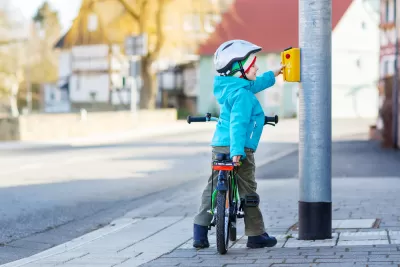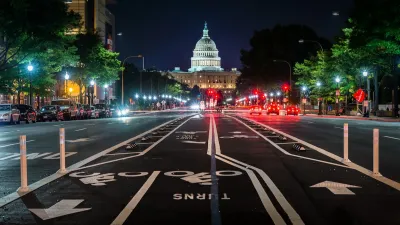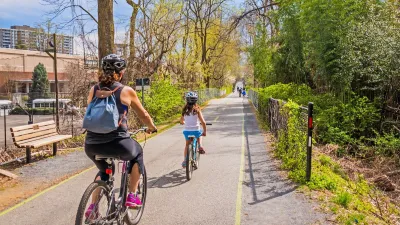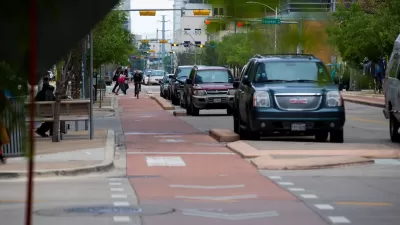How bicycling advocates can strengthen existing partnerships and make strategic alliances that will benefit cyclists, pedestrians, and other vulnerable road users.

As bicycle advocates around the country wait for funding from the Infrastructure Investment and Jobs Act (IIJA), Charles Pekow describes the strategies that can help them "take advantage of the new money and rules that can help expand cycling and make it safer."
Noa Banayan, director of federal affairs for People for Bikes, advises bike advocates to seek out existing opportunities and partnerships that will help them leverage more resources for bike improvements. For example, "One of the advantages of the new bill is it requires states with high levels of bike/ped traffic crashes in a given year to spend at least 15 percent of their Highway Safety Improvement Program money on projects to help such 'vulnerable road users.'"
"And since IIJA expands uses of Safe Routes to School (SRS) funding for infrastructure to get students to ride to school and high school education, it would help to coordinate with schools on infrastructure, as increased levels of funding are supposed to become available for Transportation Alternatives and other programs, [League of American Bicyclists policy director Ken] McLeod notes."
Pekow also points to the Rails-to-Trails Conservancy as a potential partner on bike infrastructure, noting that the Conservancy "provides plenty of info on getting IIJA funding for trails at https://www.railstotrails.org/policy/trailstransform/#funding."
FULL STORY: Bicycle Infrastructure Projects Still Awaiting Congressional Funding

Study: Maui’s Plan to Convert Vacation Rentals to Long-Term Housing Could Cause Nearly $1 Billion Economic Loss
The plan would reduce visitor accommodation by 25,% resulting in 1,900 jobs lost.

North Texas Transit Leaders Tout Benefits of TOD for Growing Region
At a summit focused on transit-oriented development, policymakers discussed how North Texas’ expanded light rail system can serve as a tool for economic growth.

Why Should We Subsidize Public Transportation?
Many public transit agencies face financial stress due to rising costs, declining fare revenue, and declining subsidies. Transit advocates must provide a strong business case for increasing public transit funding.

How to Make US Trains Faster
Changes to boarding platforms and a switch to electric trains could improve U.S. passenger rail service without the added cost of high-speed rail.

Columbia’s Revitalized ‘Loop’ Is a Hub for Local Entrepreneurs
A focus on small businesses is helping a commercial corridor in Columbia, Missouri thrive.

Invasive Insect Threatens Minnesota’s Ash Forests
The Emerald Ash Borer is a rapidly spreading invasive pest threatening Minnesota’s ash trees, and homeowners are encouraged to plant diverse replacement species, avoid moving ash firewood, and monitor for signs of infestation.
Urban Design for Planners 1: Software Tools
This six-course series explores essential urban design concepts using open source software and equips planners with the tools they need to participate fully in the urban design process.
Planning for Universal Design
Learn the tools for implementing Universal Design in planning regulations.
City of Santa Clarita
Ascent Environmental
Institute for Housing and Urban Development Studies (IHS)
City of Grandview
Harvard GSD Executive Education
Toledo-Lucas County Plan Commissions
Salt Lake City
NYU Wagner Graduate School of Public Service





























